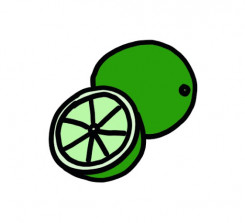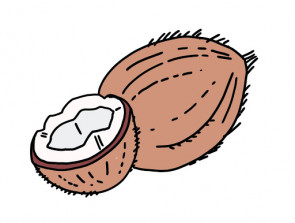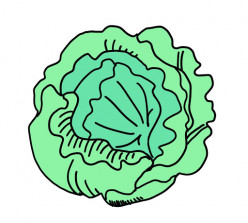Your baby is now officially an embryo and is about the size of a poppy seed.
Please visit www.nhs.uk/conditions/pregnancy-and-baby/4-weeks-pregnant/ for more information.
Local Maternity and Neonatal System
View navigation
Labour and birth
An induced labour is one that's started artificially. It's fairly common, with approximately 1 in 5 labours being induced in the UK.
Sometimes labour can be induced if your baby is overdue or there's any sort of risk to you or your baby's health. This risk could be if you have a health condition such as high blood pressure , for example, or your baby isn't growing.
Induction will usually be planned in advance. You'll be able to discuss the advantages and disadvantages with your doctor and midwife, and find out why they think your labour should be induced.
Most women go into labour naturally (spontaneously) by the time they're 42 weeks pregnant.
If your pregnancy lasts longer than 42 weeks and you decide not to have your labour induced, you should be offered increased monitoring to check your baby's wellbeing.
 Hull University Teaching Hospitals NHS Trust Women and Children's Hospital midwives have produced a video on induction of labour that can be accessed through their website here .
Hull University Teaching Hospitals NHS Trust Women and Children's Hospital midwives have produced a video on induction of labour that can be accessed through their website here .
Induction is offered to all women who don't go into labour naturally by 42 weeks, as there's a higher risk of stillbirth or problems for the baby if you go over 42 weeks pregnant.
You can find out more about the induction of labour compared with staying pregnant by reading Choices when pregnancy reaches 41 weeks (PDF, 536kb).
If your waters break more than 24 hours before labour starts, there's an increased risk of infection to you and your baby.
If your waters break after 34 weeks, you can discuss the options of care available to you, such as induction or expectant management. Expectant management is when your healthcare professionals monitor your condition and your baby's wellbeing, and your pregnancy can progress naturally as long as it's safe for both of you.
Your midwife or doctor should discuss your options with you before you make a decision. They should also let you know about the newborn (neonatal) special care hospital facilities in your area.
If your baby is born earlier than 37 weeks, she or he may be vulnerable to problems related to being premature.
If your waters break before 34 weeks, you'll only be offered induction if there are other factors that suggest it's the best thing for you and your baby.
You may be offered an induction if you have a condition that means it'll be safer to have your baby sooner, such as diabetes , high blood pressure or obstetric cholestasis (intrahepatic cholestasis of pregnancy).
If this is the case, your doctor and midwife will explain your options to you so you can decide whether or not to have your labour induced.
Before inducing labour, you'll be offered a 'membrane sweep', also known as a 'cervical sweep', to bring on labour.
To carry out a membrane sweep, your midwife or doctor sweeps their finger around your cervix during an vaginal examination. This action should separate the membranes of the amniotic sac surrounding your baby from your cervix. This separation releases hormones (prostaglandins), which may kick-start your labour.
Having a membrane sweep can be uncomfortable and you may notice some slight bleeding afterwards. If labour doesn't start after a membrane sweep, you'll be offered induction of labour.
Induction is carried out in a maternity unit, but you may be able to go home following the start of the procedure. This varies between our hospitals, so please discuss this with the maternity team caring for you.
For more information about induction of labour, please click here .
If you're being induced, you'll go into the hospital maternity unit.
Contractions can be started by inserting a tablet (pessary) or gel into the vagina.
Induction of labour may take a while, particularly if the cervix (the neck of the uterus) needs to be softened with pessaries or gels.
If you have a vaginal tablet or gel, you may be allowed to go home while you wait for it to work.
You should contact your midwife or obstetrician if
If labour doesn't begin after the first tablet or gel, you may be offered a further dose.
Once your cervix has started to dilate (open), the next stage of the process is to artificially break your waters. This involves another vaginal examination, with the midwife or doctor using a small plastic instrument to make a small tear in the membranes to allow the amniotic fluid (waters) to drain away.
Sometimes a hormone drip is needed to speed up the labour. Once labour starts, it should proceed normally, but it can sometimes take 24 to 48 hours to get you into labour.
Your pain relief options during labour aren't restricted by being induced. You should have access to all the pain relief options usually available in the maternity unit. Women undergoing induction of labour have a slightly higher change of having an epidural, assisted delivery, where forceps or ventouse suction are used to help the baby out, or caesarean section.
Induction isn't always successful, and labour may not start.
Your obstetrician and midwife will assess your condition and your baby's wellbeing, and you may be offered another induction or a caesarean section.
Your midwife and doctor will discuss all your options with you.
In 2004-05, 1 in every 5 births in the UK were induced, according to the National Institute for Health and Care Excellence (NICE).
Among these induced births, when labour was started using drugs
There are no proven ways of starting your labour yourself at home.
You may have heard that certain things can trigger labour, such as herbal supplements and having sex, but there's no evidence that these work. Other methods that aren't supported by scientific evidence include acupuncture , homeopathy , hot baths, castor oil, and enemas.
Having sex won't cause harm, but you should avoid having sex if your waters have broken as there's an increased risk of infection.
For more information on induction, you can read the NICE guidelines on induction of labour . NICE also has information for the public on induction of labour.

Your baby is now officially an embryo and is about the size of a poppy seed.
Please visit www.nhs.uk/conditions/pregnancy-and-baby/4-weeks-pregnant/ for more information.

Your baby is now the size of a kidney bean and weighs 1g.
Please visit www.nhs.uk/conditions/pregnancy-and-baby/8-weeks-pregnant/ for more information.

Welcome to the second trimester!
Your baby is about the size of a small lime and weighs approximately 14g.
You have hopefully seen your midwife for your 'booking in' appointment, if you have not yet seen a midwife please make an appointment quickly, so you can have all of your choices about screening tests explained and offered to you.
Please visit www.nhs.uk/conditions/pregnancy-and-baby/12-weeks-pregnant/ for more information. You can also link to the 'Pregnancy Journey' area here.

Your baby is about the size of an avocado and weighs approximately 100g.
Please visit www.nhs.uk/conditions/pregnancy-and-baby/16-weeks-pregnant/ for more information.

Your baby has grown in length and is now the length of a small banana and weighs approximately 300g. Around this time you will be offered your '20 week' scan, also known as the 'anatomy' or 'anomaly' scan.Click here for more information about screening.
This is a also a good time to talk and sing to your bump as your baby can now hear sounds. This is great way for you and your partner/family to bond with your baby.
Please visit www.nhs.uk/conditions/pregnancy-and-baby/20-weeks-pregnant/ for more information.

Your baby has grown again to the approximate length of an ear of sweetcorn and weighs about 600g.
Please visit www.nhs.uk/conditions/pregnancy-and-baby/24-weeks-pregnant/ for more information.

Welcome to the third trimester!
Your baby is now approximately the weight of an aubergine; about 1kg and approximately 37cm in length.
Please visit www.nhs.uk/conditions/pregnancy-and-baby/28-weeks-pregnant/ for more information.

Your baby now weighs approximately the same as a coconut; around 1.5kg.
Please visit www.nhs.uk/conditions/pregnancy-and-baby/32-weeks-pregnant/ for more information.

Your baby is now around the same size as a lettuce, approximately 47cm long and weighs around 2.6kg.
Please visit www.nhs.uk/conditions/pregnancy-and-baby/36-weeks-pregnant/ for more information.

Your baby is now the weight of a small watermelon which is approximately 3.3kg and around 50cm in length.
Please visit www.nhs.uk/conditions/pregnancy-and-baby/40-weeks-pregnant/ for more information.